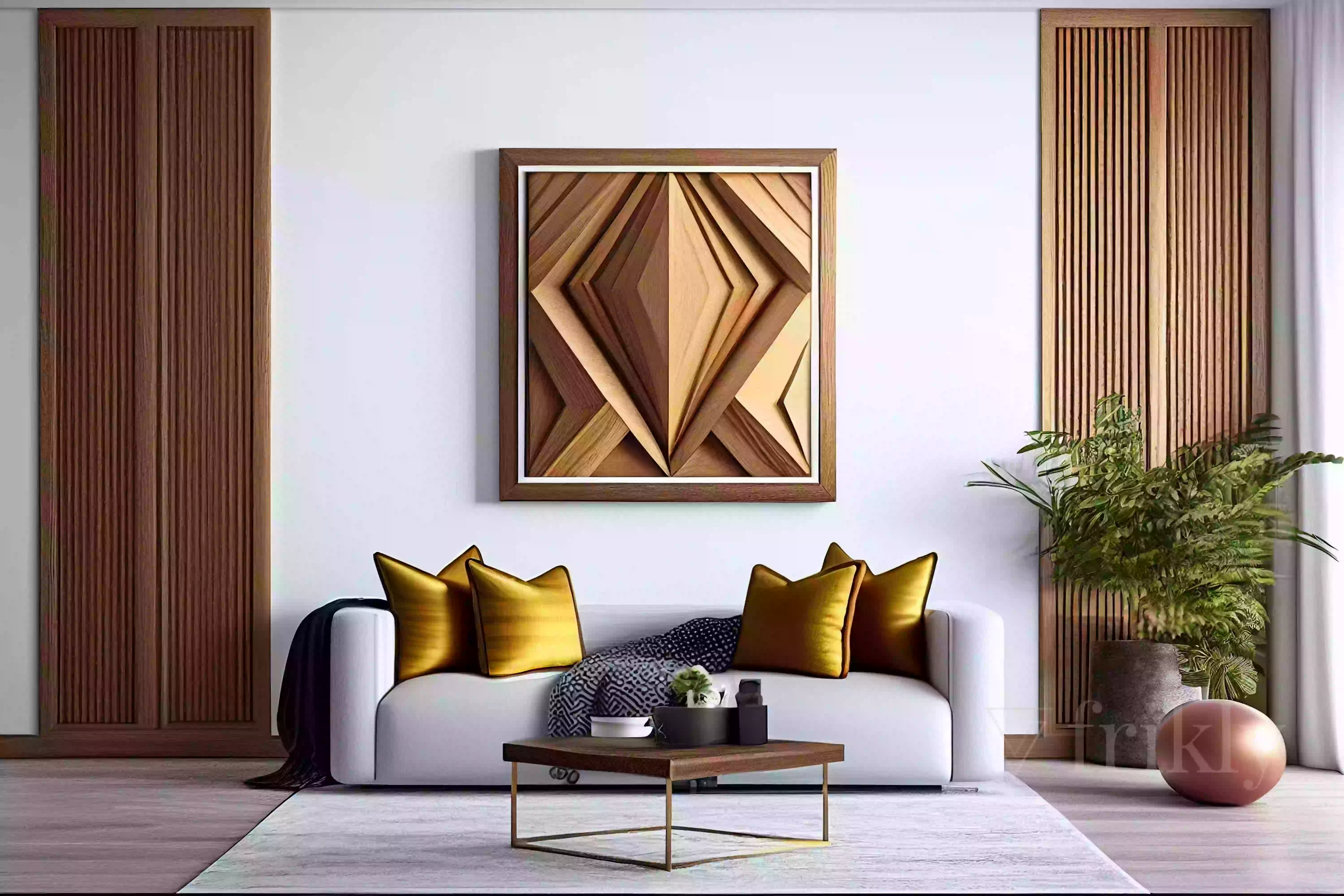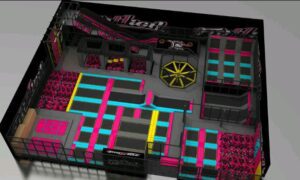In the evolving world of interior design, the harmony between aesthetics and sustainability has never been more important. Homeowners, architects, and designers alike are increasingly leaning into solutions that offer the warmth and elegance of natural materials without compromising the environment. Enter custom wood veneers: a sophisticated, sustainable way to transform interiors with texture, character, and natural beauty. At the core of this trend are wood veneer sheets, the heroes behind many stunning surfaces you encounter in modern homes, hotels, and commercial spaces.
Whether you’re aiming to craft a bespoke kitchen, upscale office lobby, or cozy bedroom sanctuary, custom wood veneers provide a uniquely eco-conscious path to interior sophistication.
What Are Wood Veneer Sheets?
Wood veneer sheets are thin slices of real wood—often no thicker than a few millimeters—adhered to core panels such as MDF (medium-density fiberboard), plywood, or particleboard. Unlike solid wood, which is cut from large sections of timber, veneers are produced by slicing or peeling logs into sheets. These sheets retain the natural grain, texture, and character of the wood species they originate from.
This method of surfacing allows for the luxurious appearance of solid wood while maximizing material efficiency. Veneers can be tailored in species, grain direction, texture, and finish, enabling designers to achieve virtually any look imaginable—whether that’s the minimalism of white oak, the depth of walnut burl, or the exotic flair of zebrawood.
The Benefits of Using Custom Wood Veneers
Custom wood veneers offer a suite of benefits that cater to both aesthetic desires and environmental concerns:
- Sustainability
Wood veneers are inherently more sustainable than using solid hardwood. Because only a thin layer of wood is used, one log can yield significantly more surface material than traditional lumber. This efficiency helps reduce deforestation and waste, making veneers an ideal choice for eco-conscious consumers and LEED-certified projects.
Many veneer manufacturers source logs from responsibly managed forests or use reclaimed and recycled wood. With sustainability certifications like FSC (Forest Stewardship Council), you can trace the origin of your veneers and ensure your designs align with green building principles.
- Design Versatility
Custom wood veneers allow for a high degree of personalization. Whether you’re seeking a book-matched walnut for a headboard or a quarter-cut ash veneer for cabinetry, you can choose specific grain patterns, cuts (such as rotary, plain sliced, or rift), and finishes that meet your design intent.
You can also mix and match species to create striking patterns, inlays, or contrasts—something that would be prohibitively expensive or wasteful using solid wood.
- Cost Efficiency
While offering the visual appeal of high-end hardwoods, veneers are far more economical. The core panels to which they are applied are less costly than thick slabs of solid wood, and the reduced material waste lowers production costs. This makes custom veneer applications accessible even for projects with moderate budgets.
- Stability and Performance
Solid wood is susceptible to warping, cracking, and shrinking due to fluctuations in temperature and humidity. In contrast, wood veneer sheets—when bonded to stable substrates—resist these issues and maintain their appearance over time. This makes veneers ideal for both residential and commercial applications where durability is critical.
Popular Applications of Wood Veneer Sheets in Interior Design
Custom wood veneers are incredibly versatile and can be found in virtually every room and design style:
- Cabinetry and Millwork
Kitchens, bathrooms, and built-in storage units benefit from the natural charm of veneered panels. Designers often use matching veneers for seamless cabinetry or contrasting grains for dramatic visual effects.
- Wall Paneling
Full-height wall panels clad in warm wood veneer sheets can transform a plain space into a cozy, modern retreat. Veneers can also be used in slat wall designs, adding acoustic and decorative benefits.
- Furniture
From desks and coffee tables to media consoles and headboards, custom veneers bring a handcrafted touch to furniture. Whether sleek and minimalist or rich and ornate, veneers deliver standout finishes that enhance craftsmanship.
- Ceiling Treatments
Ceilings are often overlooked opportunities for design. Veneer panels or acoustic tiles clad in fine wood can lend warmth and intimacy to large rooms or commercial lobbies.
- Doors
Interior doors veneered in exotic woods or classic grains offer a premium feel without the weight or cost of solid wood. They can be customized to match architectural elements or contrast them for impact.
Aesthetic Styles to Explore
There’s no limit to the design directions you can take with wood veneer sheets. Here are a few trending styles:
- Scandinavian Minimalism: Think white oak or ash veneers in light finishes, clean lines, and natural textures.
- Mid-Century Modern: Use walnut or teak veneers with rich tones and sleek geometries.
- Contemporary Luxe: Combine ebony, Macassar, or figured maple veneers with metallic accents for a bold statement.
- Rustic or Organic Modern: Embrace reclaimed or live-edge veneers with natural imperfections and matte finishes.
The ability to customize cut, grain, and finish ensures that every space tells its own story through wood.
How to Choose the Right Veneer for Your Project
Selecting the right wood veneer sheets begins with understanding your aesthetic goals and functional needs. Here are some key considerations:
- Wood Species: Each species has a distinct grain, color, and personality. Walnut offers rich browns and flowing grain, while maple is light and consistent.
- Cut Method: The way a veneer is sliced affects its grain pattern. Plain slicing produces cathedrals, while quarter-slicing produces straight lines.
- Substrate: Consider the type of core material the veneer will be applied to—this affects weight, performance, and cost.
- Finish: Choose from matte, semi-gloss, or high-gloss finishes, or opt for natural oils for a tactile, organic feel.
- Edge Treatments: If edges will be visible, consider how the veneer wraps or transitions to avoid visible seams or mismatched grains.
Working with an experienced fabricator or millwork shop can help ensure your custom veneer selections align with your design vision and perform as intended.
Caring for Veneered Surfaces
Maintaining the beauty of veneered surfaces is relatively straightforward:
- Dust Regularly: Use a soft, dry cloth to remove dust and prevent buildup.
- Clean Gently: Avoid harsh chemicals. A damp cloth and mild soap are usually sufficient.
- Avoid Moisture: While veneers resist warping, excessive water can still damage them, especially at the edges.
- Protect from Heat and UV: Use coasters and curtains to prevent heat marks and fading.
With proper care, wood veneer sheets can retain their elegance for decades.
A Sustainable Future Through Design
As the design world shifts toward greener practices, the use of custom wood veneers is gaining momentum. By maximizing the yield from each tree, reducing the need for exotic lumber imports, and promoting the use of responsibly sourced materials, wood veneers contribute meaningfully to sustainable construction and interior innovation.
Choosing veneers isn’t just about beauty—it’s a commitment to craftsmanship, longevity, and environmental responsibility. And with today’s wide range of customization options, you don’t have to compromise style to stay sustainable.
Final Thoughts
Incorporating wood veneer sheets into your interior design projects offers a compelling combination of natural beauty, design versatility, cost efficiency, and eco-consciousness. Whether you’re outfitting a boutique hotel lobby, designing your dream kitchen, or refreshing a home office, custom wood veneers provide a powerful tool to bring warmth, character, and sophistication to your space.
As demand grows for interiors that are both luxurious and environmentally responsible, custom veneers are not just a trend—they’re the future of design. It’s time to rethink what’s possible with wood, one beautiful sheet at a time.





























